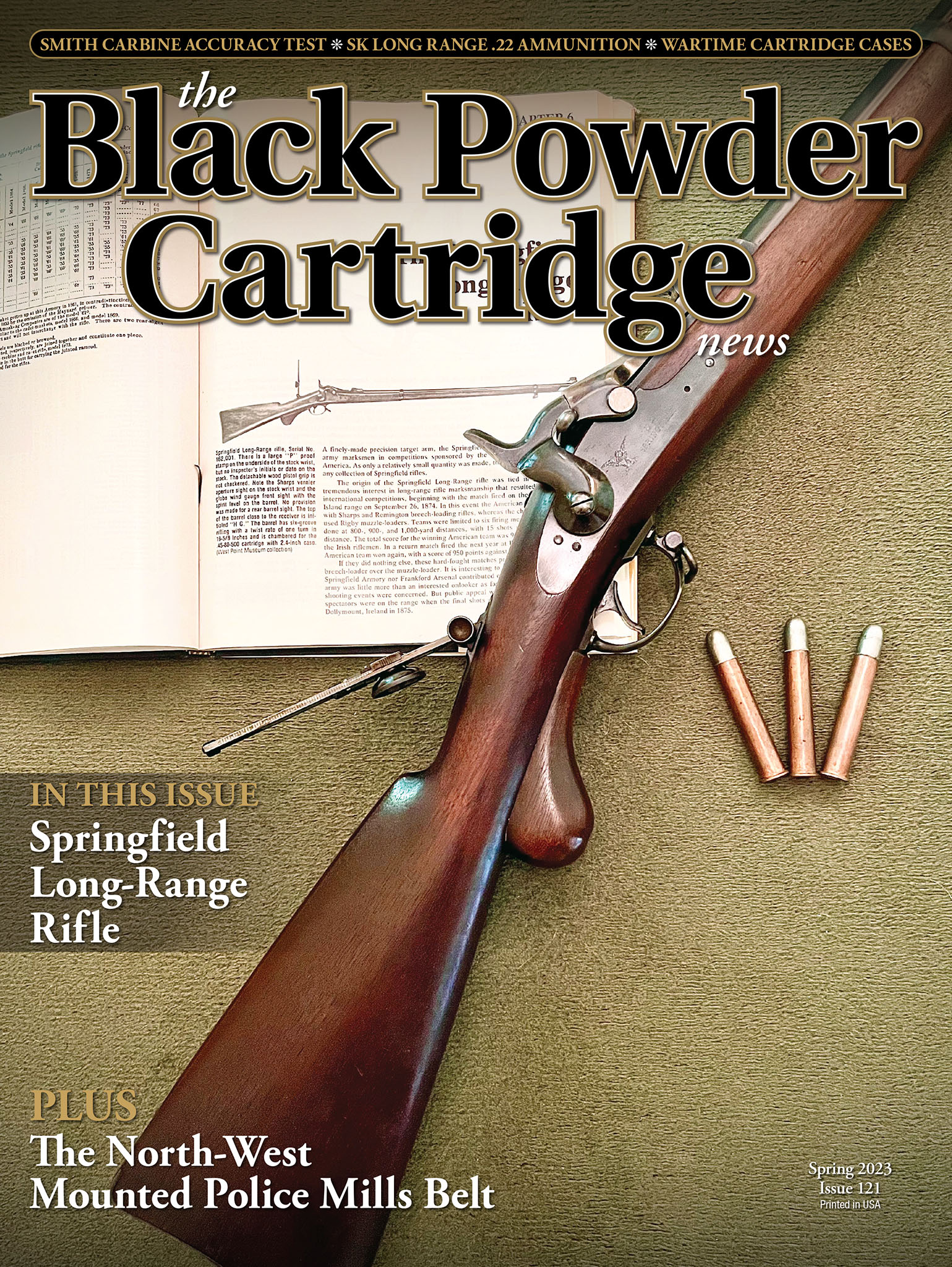SK Long Range
A New Long-Range .22 Rimfire Ammunition
feature By: Steve Garbe | March, 23
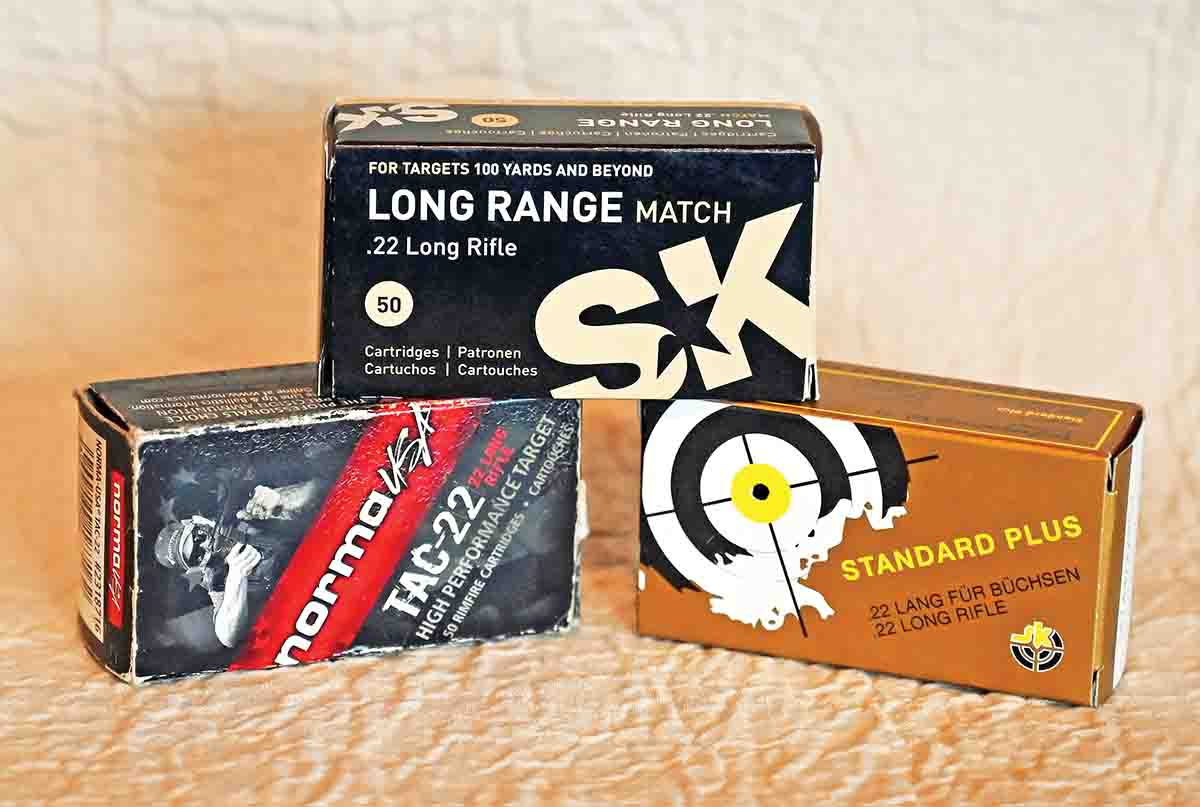
Of primary importance for accurate long-range rimfire shooting is the chosen ammunition’s standard deviation (SD) and extreme spread (ES). If SD and ES are in the double digits, you can really forget about any kind of reliable performance past 150 yards. This is not to mention that the specific ammunition has to “work” in your rifle and .22 rimfires are notorious for liking only one particular brand of ammunition. With the myriad of rimfire chambers used over the years, what works in one rifle won’t necessarily work in another, even if they are of the same make and model.
Therefore, ammunition that has a low standard deviation/extreme spread and displays adequate accuracy for the targets engaged is the ideal. Typically, while I’m testing for group size, I run every shot over the chronograph. This will tell me standard deviation, extreme spread and more importantly, when I get a shot that really falls out of the group, I can check velocity to see if it was the culprit.
I decided to test the new SK Long Range .22 ammunition at 50, 100 and 200 yards. Most of our readers are in to .22 BPCR Silhouette and those distances would give a useful profile of the SK Long Range ammunition’s capability. I used a favorite Remington 40-X single shot for the test rifle as it is exceptional in its ability to shoot accurately with just about anything I feed it. The scope was a 20X Lyman Super Target Spot and the Remington barrel was 28-inches long. This rig is one of the most accurate .22 rifles I own and is by far the least fussy. I started with a clean bore, fouled it with 10 shots and then proceeded to shoot some groups with the SK Long Range ammunition. I also used Wolf Standard Plus and Norma TAC-22 ammunition for comparison purposes. The rifle was rested on the forearm with a heavy Kearns “Gibraltar” front rest, a Protektor rear bag rest and a Stukey bench on a concrete floor, which makes up into about as solid a support system as one can get, short of a return-to-battery machine rest. Conditions for shooting were good for autumn in Montana, with just a slight left to right component and the temperature was 36 degrees Fahrenheit. When changing ammunition, the barrel was lightly cleaned with two patches and then a fouling shot would be fired before shooting the 10-shot string.
Let me say here that these are all moderately-priced .22 target cartridges with the SK Long Range retailing for $12.79 per 50, the Wolf Standard Plus for $12.50 per 50 and the Norma TAC-22 at $6.99 per 50. I’m well aware that there are much higher-priced cartridges available and when buying .22 ammunition, the golden rule is that you get what you pay for. However, I believed that for most shooters, these brands would represent good value for the money spent, providing adequate accuracy for their shooting without breaking the bank.
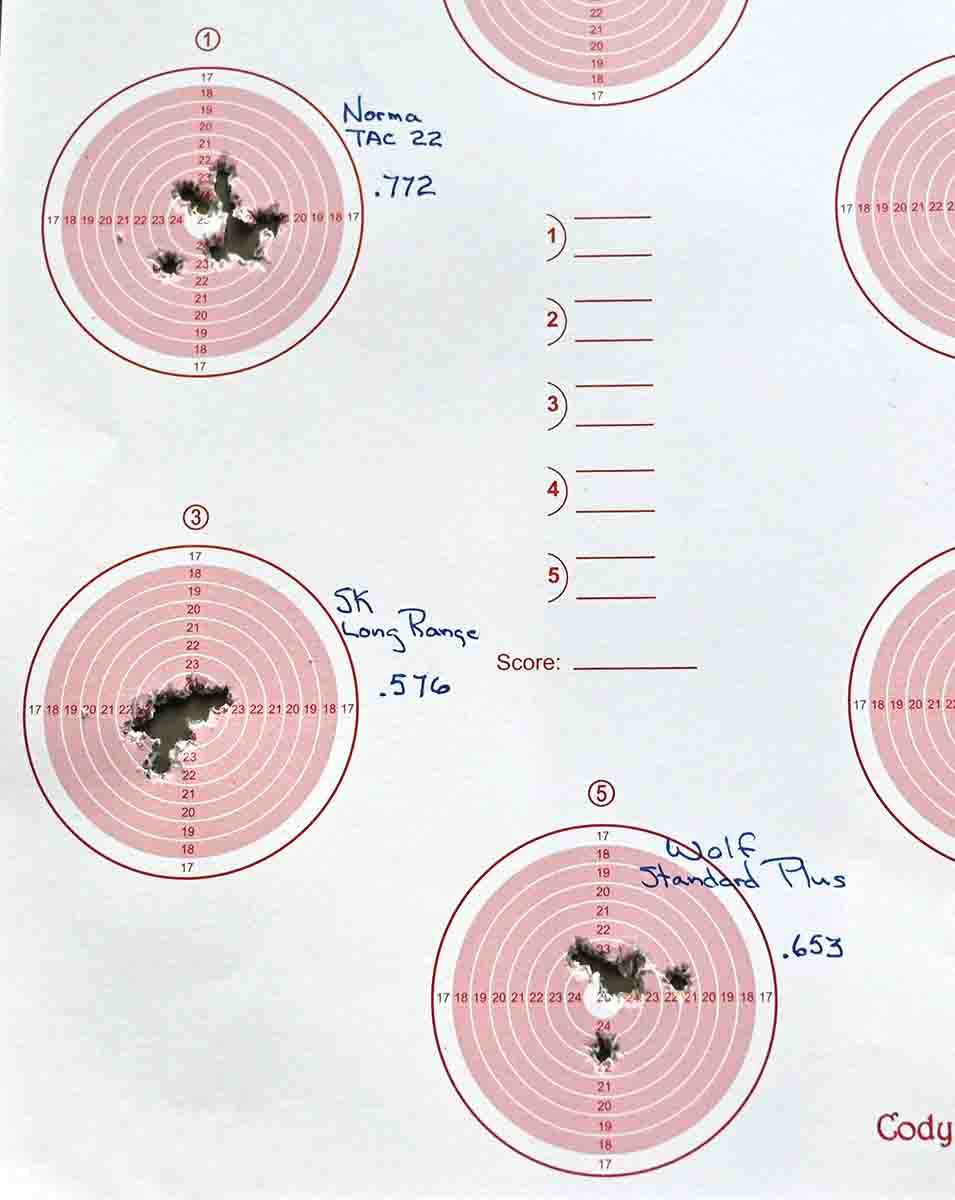
I also used 10-shot groups, as I believe that 10 shots are the minimum to really see what rimfire ammunition will do at a given distance. Technically, I would use 15-shot groups for ammunition that I would use in .22 BPCR Silhouette; recreating the shooting scenario is something that I believe in for competition. Fifteen shots would represent the sighters and shots for score that are typically done in that discipline. I also measured group size from the farthest bullet holes. This is what is typically done for evaluation, although there is not a little discussion about other, possibly more precise techniques. When evaluating groups, I personally like to make note of both the horizontal and vertical measurements because I believe it gives me a better feel for the most accurate load.
Readers will notice that I obviously put more emphasis on extreme spread than standard deviation. This comes from shooting matches where one uses the information from the previous shot to hold for the following shot. If the ammunition used is prone to having fliers in the form of high or low velocity readings, I can’t count on it in a match situation.
At 50 yards, the SK Long Range turned in the smallest 10-shot group at .576, farthest holes, Wolf Standard Plus was second with .653 and Norma TAC 22 followed at .772 for 10 shots. The SK Long Range chronographed an average 1,049 feet per second (fps) with an extreme spread of 23 fps (SD of 8 fps), the Wolf Standard Plus was 1,018 fps with an extreme spread of 52 (SD of 14.5 fps) and the Norma Tac came in at 1,047 fps and an extreme spread of 63 (SD of 16.8 fps). These velocities were lower than what was advertised on the ammunition boxes, however, the temperature was 36 degrees Fahrenheit when I shot the strings and I’m sure that the colder temperature had much to do with the lower velocities.
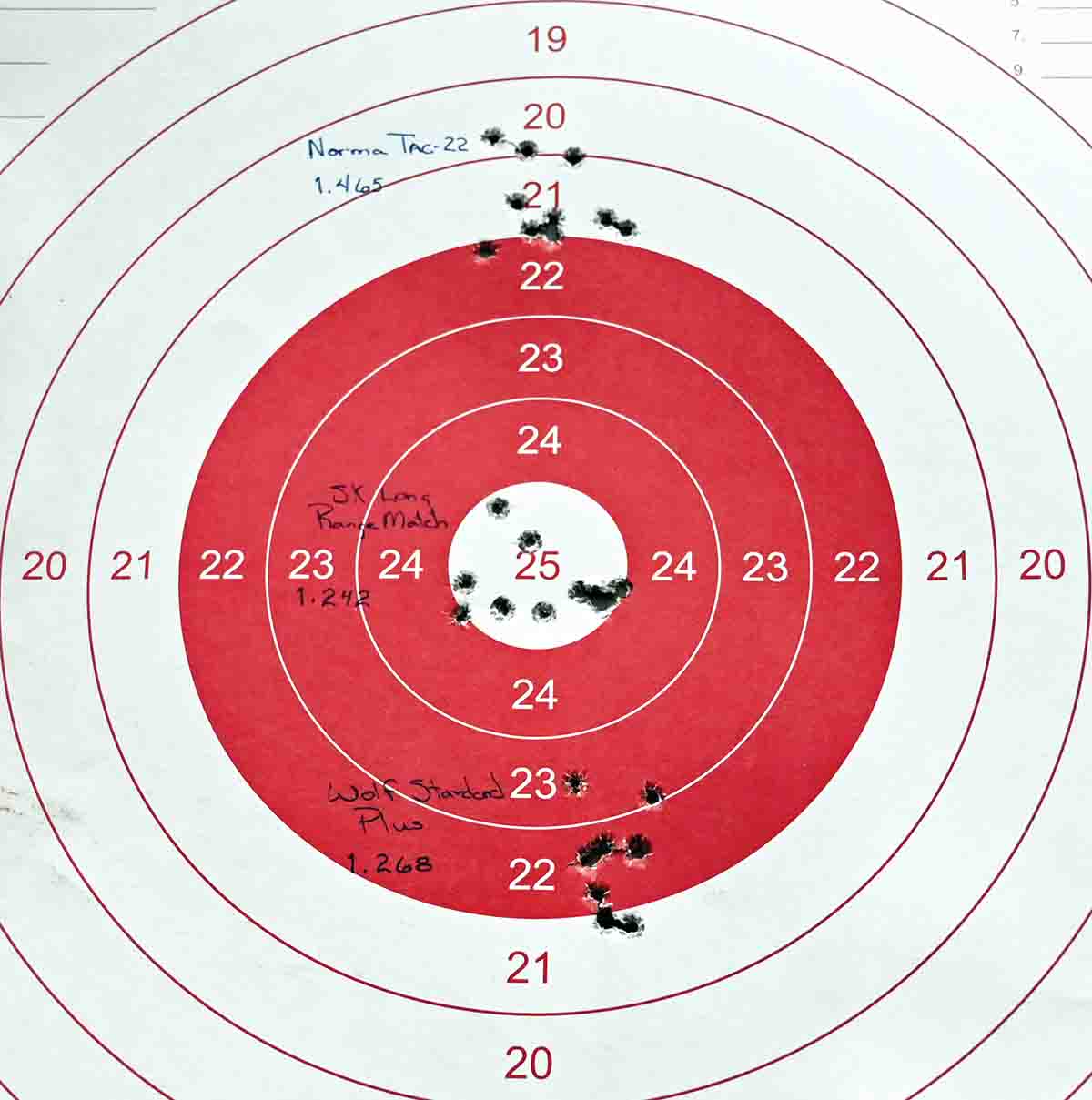
Shooting at 200 yards was a real eye opener. The SK Long Range turned in by far the best group measuring 3.291 inches with a noticeable lack of vertical stringing. I think this was due to the low extreme spread of 23. Norma Tac was second with 5.123 inches but was noticeable in just shooting a big group. I believe that this showed that the Tac 22 ammunition was about at the end of accuracy; any further distance would see things really deteriorate. The group with Wolf Standard Plus measured 5.962 inches, which was opened up by one high shot. Taking out the high shot resulted in a 3.791-inch group, which is not bad at 200 yards, but if I was counting on the round that went high as a score shot, it would be significant. The SK Long Range group was easily under 2 MOA (4 inches) and was the obvious accuracy winner.
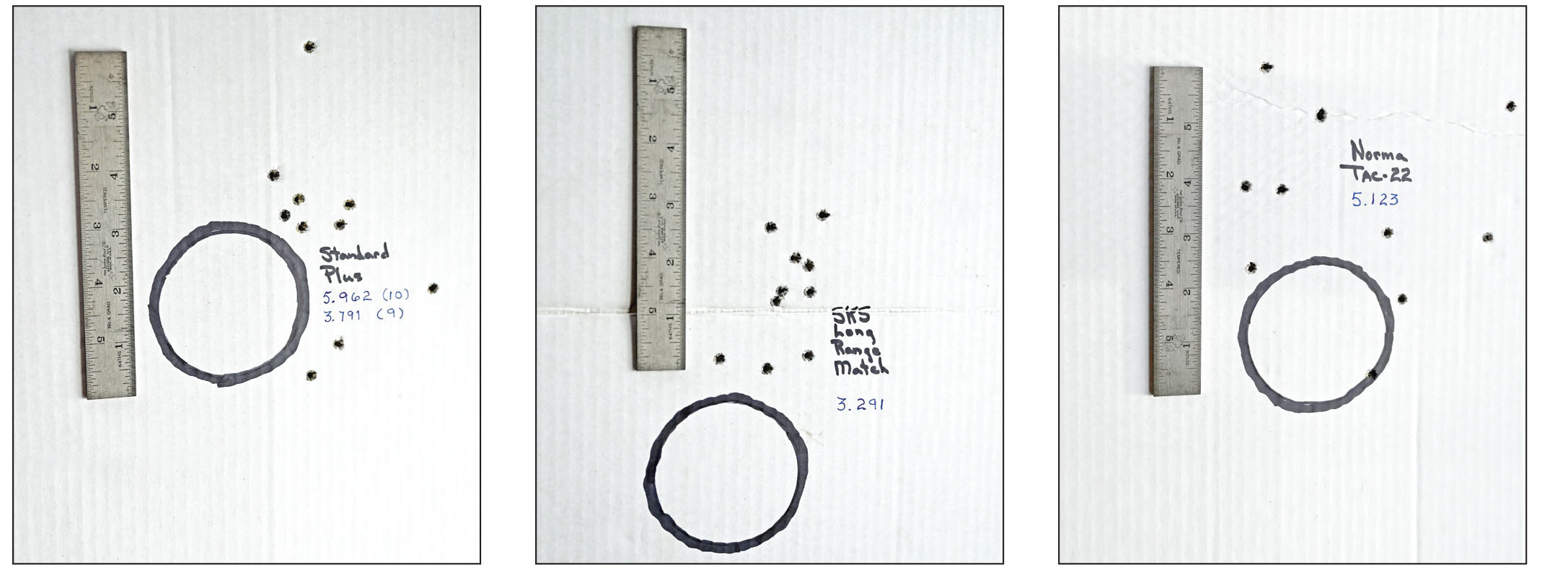
Saying the above concerning wind leads me to another statement. I have seen comments in magazine articles and on the internet about riflemen shooting out to 500 or 600 yards with their .22 rimfires. I have spent a little time doing this as well, mainly some years ago during the BPCR Nationals on “off” days, shooting at the BPCR Silhouette targets. If it is calm, one can make a credible showing at hitting even the rams at 550 meters. However, dial-in the slightest of breezes and accuracy at these extreme ranges completely falls apart. Before anyone says, “You needed to shoot better ammunition,” let me say that at the time I was using Federal UM1 target ammunition, which has still to be equaled, in my opinion, by any of the .22 ammunition we have today. It is very regrettable that Federal quit the manufacture of this truly remarkable ammunition, with its extremely low extreme spread and standard deviation. The point being made is that a .22 rimfire will only shoot so far with reliable, calculable results. Extend that range beyond those limits and one is merely lobbing bullets in the direction of the target and allowing luck to dictate any hits.
Now, for a bit about bullet lubrication. I noticed that the SK Long Range ammunition and the Wolf Standard Plus had much the same soft, slick lube on the bullets. The Norma Tac was a bit harder and not so slippery. In the cold temps (and low humidity) that I shot the test in I noticed that the Norma Tac was fouling more than the other ammunition. This is typical for cold-weather shooting, but I also prefer a soft lube for hot weather as well. There is much ongoing discussion amongst rimfire riflemen on what lube is best and I won’t attempt to resolve the controversy here. All I will say is that the harder lube did leave tougher fouling in the barrel as noted when cleaning between strings.
At the end of the test, limited as it was, I believed the new SK Long Range .22 ammunition represented a very good value for the money, providing performance out of proportion to its cost. I will be using it for .22 BPCR Silhouette competition and for 200-yard Schuetzen matches as well.


